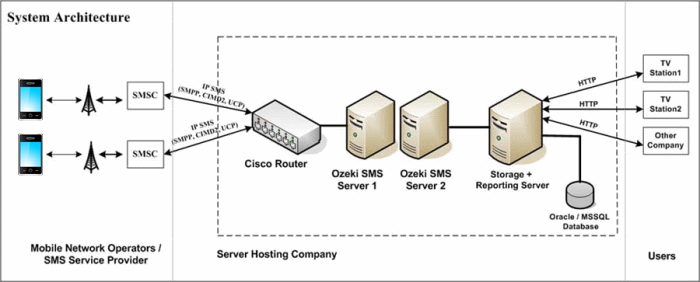High volume sms
How to build a high-volume SMS messaging system?
Building a high-volume and high-capacity SMS system means that you can reach more possible customer, or you can spread information to your existing customers quicker. This article will give you anchor points you can follow when building a high-volume text messaging system. When building a high-volume SMS system to manage your bulk SMS campaigns, the first thing you need to pay attention to is the amount of SMS you will send through the system per seconds. In this article, you are going to see the message capacity of the Ozeki SMS Gateway and some more detailed explanation of the topic. You will also see option of usage of the gateway software, and some components if you decided to build an SMS server. This article is detailed and easy to understand. You don’t need any previous knowledge of SMS technologies to learn from it.
What is high volume SMS messaging system?
High-volume SMS is a system the companies can use to send text messages to many people at once. It can queue up messages to thousands of customers and sends it out in order.
Why do you need a high-volume SMS system?
In marketing, the most important aspect is the flow of information. If you have any excellent marketing campaign, but you have no way of delivering the information to people, your marketing campaign will not be successful. A high-volume SMS sending system means that you will reach more people way faster than any other SMS campaign system. You will have excellent information flow to your customers, and you can even make it interactive with implementing ways of answering your text messages.
Message Capacity
The most important indicator of a high-volume SMS system is the number of messages it can send to the public telephone network per second. The bigger this number, the smaller the process time and the smaller the SMS queue is. The Ozeki SMS Gateway can send up to 80 SMS / second which is one of the highest message capacities in the industry. Please note that this is balanced between the incoming and outgoing messages. If you receive 40 SMS / second, you can send 40 SMS / second. You can always limit the incoming / outgoing messages ratio. You can even build a system is only accepting incoming messages. The peak capacity determines the required CPU performance of your computer.
How does a high-volume SMS system work
On Figure 1, you can see how a high-volume SMS system works and what components it contains. This solution consists of 3 separate division. The first one is the SMS service provider which will handle all the delivery of SMS messages. The server hosting company which will contain the servers, the storage units and a router. The last section is the users. These are your customers that are to receive messages from you. The server hosting company has 4 more parts that are crucial when building an SMS gateway server.
The following list will give you detailed information on what parts of server hosting company are responsible of what processes:
- Cisco Router
- VPN Connection management (L2TP/ PPTP over IPSEC)
- Firewall Functionality
- Network Address translation (static routes)
- Ozeki SMS Server 1
IP SMS connection termination (supported SMS protocols):- SMPP (v3.3, v3.4, v5.0)
- CIMD2
- UCP
- HTTP Server
- HTTP Client
-
Message character set conversion (GSM 7bit, UCS2, Arabic, Chinese, Cyrill,
- Latin, etc., character sets are all converted to Unicode / UTF 8)
- Phone Number conversion (All phone numbers are converted to standard international format)
- Message Segmentation / Reassembly (To handle multipart messages)
- Message PDU Encoding / Decoding
- Delivery Report Handling
- Windowing for asynchronous high-performance messaging
- Inbound Routing
- Outbound Routing
- Ozeki SMS Server 2
- Same as Ozeki SMS Server 1
- Load Balancing
- Backup Server
- Storage + Reporting Server
- SMS Storage (Oracle or Microsoft SQL server)
- Reporting
- User Interface

For End-User Applications
If you are planning to build an end-user application, you will have 4 options regarding of storing and displaying messages. Read through the list of options where we give you a detailed description on all the setups:
Option 1: All messages (telephone numbers, message text, timestamp) should be stored in a database and a web-based user interface is required. The web-based user interface should provide a summary, and detailed message information and it should be customized according to the requirements of the customer
Option 2: Only the telephone numbers and the receiving timestamp should be stored for each message in a database. The user interface should display summary information showing the number of incoming messages based on a user defined time interval
Option 3: Only summary information should be stored. The user interface should display summary information showing the number of incoming messages based on predefined counters. (e.g. messages per hour, messages per day, etc)
Option 4: All messages should be forwarded to an external application over HTTP or another API.
Summary
By reading this article, you have learned more about why the high-volume SMS system gives you benefit in your SMS bulk marketing campaign. It can create a fast and even two-way communication channel between you and you customers. If you have read through this article, you should understand what makes a high-volume SMS system really high-volume.
If you want to know more about this topic, feel free to visit the Ozeki webpage where you can find more information about how you can use your high-volume SMS system in real life. Start with Sending SMS messages from an Excel table, or Sending SMS messages from a txt file.
To create your first high performance SMS gateway system, now is the best time to download Ozeki SMS Gateway!
